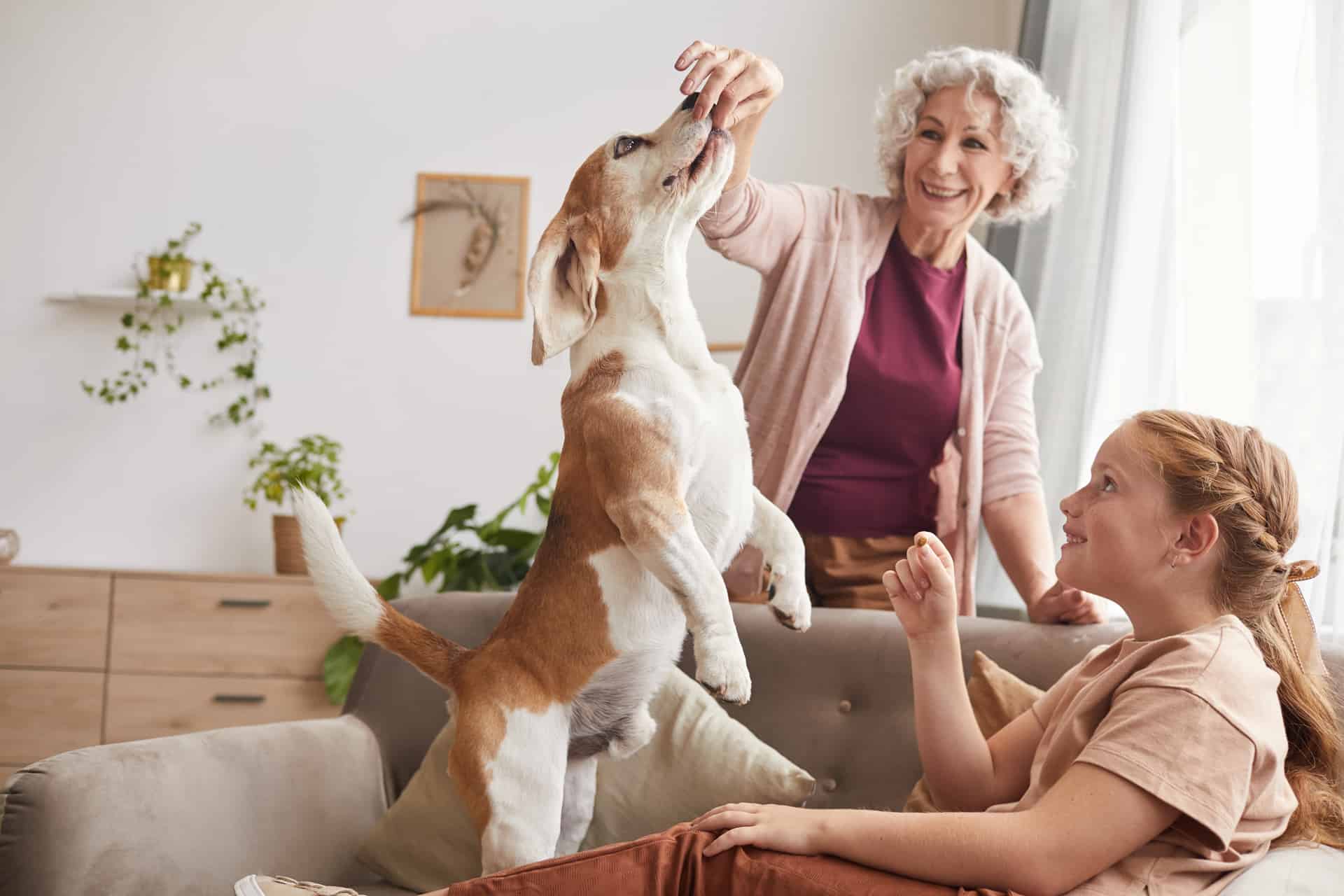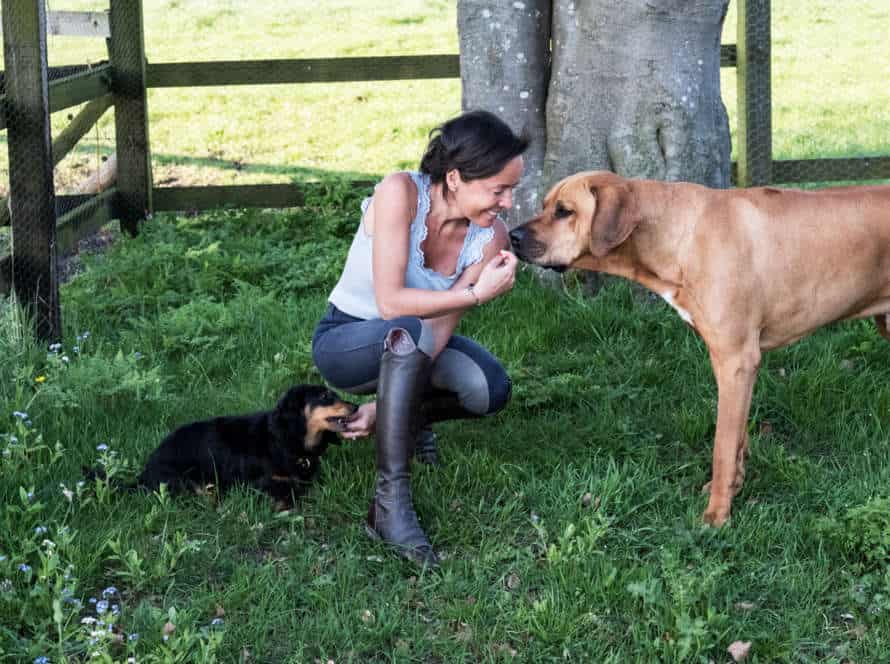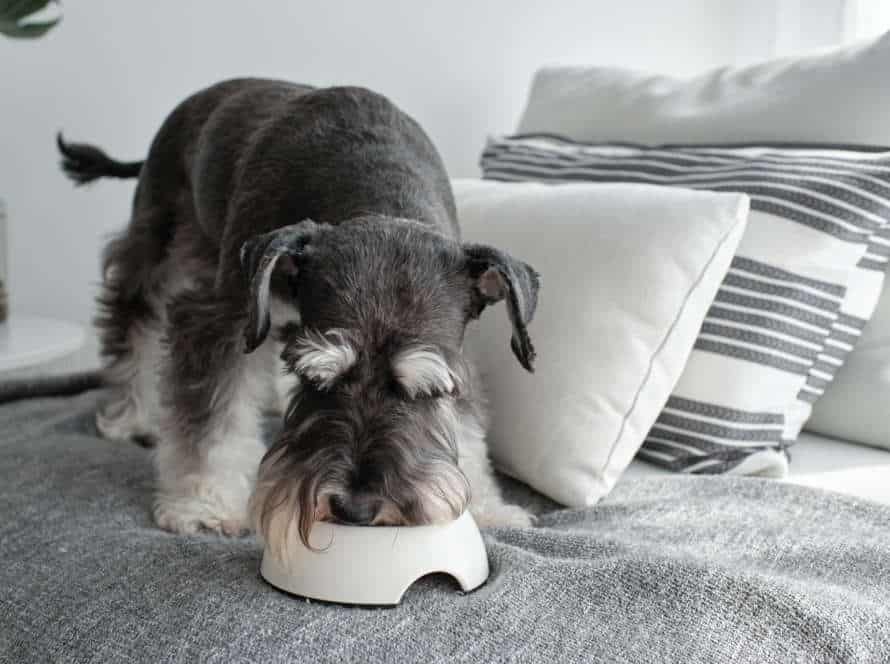Top Reasons to Choose Positive Reinforcement Training
Positive reinforcement training is a gentle and effective way to teach your pet new behaviors and commands. Here are the top reasons to choose this method:
- It builds trust between you and your pet.
- It promotes good behavior.
- It enhances learning.
- It reduces stress and fear.
- It improves communication.
Using positive reinforcement training will make it an enjoyable experience for both you and your pet. It will be worth it!
Benefits of Positive Reinforcement Training
Positive reinforcement training works by giving rewards to behaviors that are desirable. This technique is very successful in encouraging those behaviors. Studies have proven this. Let us explore further benefits of positive reinforcement training!
Building a stronger human-animal bond
Creating a strong connection between humans and animals is key for a peaceful life. Positive reinforcement training is a verified method of teaching animals that focuses on appreciating good behavior and ignoring or changing bad behavior. Here are some top reasons why positive reinforcement training is an excellent way to form a strong human-animal bond.
- Establishes trust: Positive reinforcement training builds belief between pet and owner through communication, regularity, and mutual respect.
- Helps the animal comprehend what is expected of them: The frequent use of verbal and physical signals, rewards, and redirections assists animals in understanding what is anticipated of them, leading to better conduct.
- Improves communication: Positive reinforcement training necessitates straightforward communication between animal and owner, which eventually fortifies the bond.
- Stops bad side-effects: Positive reinforcement training avoids using punishment, which has bad physical and emotional consequences on the animal and can break the bond between animal and owner.
Increases the animal’s confidence and trust
Positive reinforcement training is a humane, effective way to train animals. It increases their confidence and trust in their trainers. Benefits include:
- Building trust – Rewards create an association of training as something positive.
- Encouraging learning – Animals respond better to rewards than punishment.
- Reducing fear and anxiety – Punishment is not used, so fear and anxiety are reduced.
- Improving overall behaviour – Long-term, effective change is achieved.
- Teaching new skills – Natural instincts are encouraged and new skills developed.
Positive reinforcement training builds a good bond between the trainer and the animal.
Promotes a positive learning experience
Positive reinforcement training is a great way to train your pup! Here are the top reasons why:
- Strong Bond: This approach encourages mutual respect and trust between you and your pup, strengthening your bond.
- Good Behaviour: It rewards good behaviour, making it more likely that your pup will repeat it in the future.
- Positive Learning: Rewards desirable behaviour, making learning an enjoyable and stress-free experience for your pup.
- Boosts Confidence: Celebrate successes and praise your pup for their effort – this helps them gain confidence.
Pro Tip: Patience, consistency and a positive attitude are musts for success with positive reinforcement training!
The Science behind Positive Reinforcement Training
Positive reinforcement training is based on the principles of positive reinforcement theory. It states that when behaviours are rewarded with something pleasant, they are more likely to be repeated. This type of training includes rewards for desired behaviours. Science has proven it to be effective. It’s also a humane, non-confrontational approach. This article will discuss the science and provide examples of how it can be used.
Understanding how an animal’s brain works
Knowing how an animal’s brain works is key for successful positive reinforcement training. This method rewards good behaviors, causing them to increase. Brain chemistry & physiology are crucial for the animal’s response to this type of training.
When a desirable behavior is done, dopamine (pleasure & reward neurotransmitter) is released in the brain. Over time, the behavior is linked to positive feelings and is more likely to be repeated.
Positive reinforcement is better than punishment-based training since animals get stressed & anxious when punished, resulting in avoidance & lower motivation. This technique helps both pets & wild animals, raising their welfare & improving their life quality.
Operant conditioning and classical conditioning
Operant conditioning and classical conditioning are two major parts of the science of behaviorism. These are essential for positive reinforcement training, which is a humane, effective, and respectful way to train dogs.
Operant conditioning changes behavior through reinforcement. This can be either positive – giving a reward when the expected behavior is shown, or negative – taking away a bad thing when the wanted behavior occurs.
Classical conditioning involves making a link between a behavior and a stimulus by repeatedly joining them together.
Positive reinforcement training uses both of these ideas to teach dogs new behaviors, strengthen current behaviors, and stop bad behaviors without causing harm.
If you want a good relationship with your dog, encourage good behavior, and avoid fear, pain, or harshness, positive reinforcement training is the way to go.
Pro tip: Patience, consistency, and lots of treats are needed for positive reinforcement training!
Why positive reinforcement works better than punishment
Positive reinforcement is better than punishment. It’s based on behaviorism science and makes behavior change enduring. Here are the top reasons to pick it:
- Builds trust and increases the bond between pet and owner. Mutual understanding is key.
- Makes a positive, fear-free learning environment. Pets feel relaxed and welcomed.
- Reduces aggression. Rewards good behavior, not punishing bad.
- Encourages natural behavior. Rather than altering instincts, it celebrates them.
Choose positive reinforcement training and have a happy, healthy relationship with your pet!
Techniques used in Positive Reinforcement Training
Positive Reinforcement Training is a successful teaching approach. It encourages desirable behavior, like giving treats, compliments, or toys. Let’s explore the techniques used in Positive Reinforcement Training.
Clicker training
Clicker training is a technique to train and shape animal behavior. It uses a clicker, which makes a distinct click, to mark good behavior and give a reward. Here are the top reasons why positive reinforcement training, such as clicker training, is great for pet owners:
- Trust and reliability: Positive reinforcement training strengthens the bond between pets and owners. It encourages healthy communication.
- More learning: Training with positive reinforcement makes animals think and learn. Not just obey commands.
- Less stress: Positive reinforcement training reduces anxiety and stress. It avoids punishment and rewards motivation.
Clicker training helps pet owners create a positive environment. It encourages good behavior and builds a strong relationship.
Target training
Target training is an animal training technique that works with positive reinforcement. It involves teaching an animal to touch a specific target with a body part. Here’s how to do it:
- Introduce the target to your pet. Give them a treat each time they touch it.
- Move the target away, still rewarding your pet.
- Add a verbal cue – like “touch” – and start fading out the treats.
Target training is an effective and humane way of training. It focuses on rewarding desired behavior. This builds trust and strengthens the bond between you and your pet. Plus, research shows positive reinforcement-based training is more effective than punishment-based methods.
Stay, come, and leave-it commands
The “stay“, “come“, and “leave-it” commands are essential for positive reinforcement training. They help pet owners build a healthy bond with their furry friends. Here are the basics:
- Stay Command: Get your dog to “sit”. Give the command “stay” with a treat in your hand. Step back slowly. Reward with a treat if they stay. Increase time and distance gradually.
- Come Command: Choose a quiet, enclosed area. Say your dog’s name followed by “come”. Gently pull them towards you. Treat and praise when they reach you.
- Leave-it Command: Hold a treat in each hand. Show one to your dog, then close your hand. Say “leave-it” and wait. Give them the other treat as reward when they stop trying to get the treat.
Pro tip: Positive reinforcement training is the best choice for professional trainers. It helps create a positive atmosphere between dogs and owners while keeping them mentally and physically healthy.
Positive Reinforcement vs. Other Training Methods
Training your pet? Make sure you pick the correct method! Positive Reinforcement Training (PRT) is a great option. It rewards good behavior and ignores bad behavior. PRT has lots of advantages. Find out why it’s so effective in teaching your pet quickly!
Positive Reinforcement vs. Dominance-based training
When it comes to dog training, positive reinforcement is the better choice. Here’s why:
- It helps build a strong bond between you and your pup.
- It’s non-violent and creates a positive environment.
- It rewards good behavior and leads to long-term change.
- It reduces unwanted behavior, without punishing your dog.
Pro tip: Training takes patience, consistency and positive reinforcement.
Positive Reinforcement vs. Electronic collars
Positive reinforcement is a great and kind way to train. It praises good behavior, instead of punishing bad. In contrast, electric collars are an aversive and punishment-based approach. They can cause pain, worry and fear in dogs.
Here are the main reasons why you should use positive reinforcement over electric collars or other harsh methods:
- Positive reinforcement builds trust and respect between the dog and owner. Electric collars can have the opposite effect, bringing fear and suspicion.
- Positive reinforcement is a long-term fix that teaches dogs to act willingly, while electric collars are based on the fear of punishment.
- Positive reinforcement is safe and doesn’t cause harm to the dog, while electric collars can cause burns, scars and trauma.
- Positive reinforcement is easy and works for any dog, whatever their breed, age or temperament. On the other hand, electric collars require specialist knowledge and can be dangerous if not used right.
Tip: For a happy, well-behaved pup, choose positive reinforcement training and avoid electric collars and other aversive methods.
Positive Reinforcement vs. Choke or prong collars
Positive reinforcement is an ideal way to train your pet. It rewards good behavior and strengthens the bond between you and your pet. On the other hand, choke or prong collars use force or pain which can be harmful. Here are 5 reasons why positive reinforcement is better:
- It’s more humane and respectful.
- It’s safer and won’t cause injury.
- It strengthens the bond between you and your pet.
- It’s an effective way to address the cause of bad behavior without hurting your pet.
- It creates a healthier and happier environment for both of you.
So choose positive reinforcement and experience a wonderful relationship with your beloved pet.
Choosing a Positive Reinforcement Trainer
When selecting a trainer for your pet, it’s important to go for one who uses positive reinforcement training. This type of training rewards good behaviour and offers gentle guidance, instead of punishment, to tackle unwanted behaviours. It helps pets to boost their confidence and makes it easier for owners to build a strong bond with their pet, from the comfort of home.
Here’s why choosing a positive reinforcement trainer is advantageous:
Look for reputable trainers with Positive Reinforcement Certification
Choose a certified, trusted trainer for Positive Reinforcement when training your furry pal! Positive reinforcement is a scientific process of rewarding good conduct instead of punishing bad. Here are the top 3 reasons for choosing a certified Positive Reinforcement trainer:
- Proficiency: A certified trainer has been thoroughly trained and informed, guaranteeing they have the necessary know-how and abilities to train your pet proficiently.
- Ethics: Positive reinforcement is all about creating a positive and reliable bond between you and your pet, with no inappropriate or oppressive techniques used.
- Success: Positive reinforcement has been proven to generate long-term results, with pets being more ready to learn and keep positive habits.
So, when looking for a trainer, be sure to pick one with Positive Reinforcement Certification, and give your furry friend the best training experience ever!
Word of mouth referrals
Word-of-mouth referrals are an effective way to find the best positive reinforcement dog trainers. Three reasons why this type of training is the best for your furry friend:
- Long-term results. Positive reinforcement builds trust between you and your pup. This leads to lasting behavior modification and better obedience.
- No physical force or emotional trauma. Positive reinforcement methods never involve pain or distress. Your dog’s wellbeing is secure!
- Healthy development. These methods mirror natural learning, promoting healthy growth and better understanding of behavior cues.
To find a positive reinforcement trainer, ask friends and family for referrals. Also read reviews and ask for references. Always schedule a consultation to meet the trainer and see the methods in action.
Checking trainer reviews and reputation
When picking a positive reinforcement trainer for your pet, it’s smart to review reviews and reputations! Positive reinforcement training is a humane way that rewards desirable behavior in pets, while discouraging bad behavior. Here are some reasons why it’s the right decision:
- It encourages a healthy, loving bond between animals and owners.
- Science says it works – it’s a proven method of training.
- Pets become more independent and assured due to it.
Before choosing a trainer, check reviews, research credentials, and ask other pet owners for recommendations. To make sure your pet is in good hands, look for trainers with multiple certifications, experience and a great track record.
Pro tip: Start by searching for positive reinforcement trainers!
Conclusion and why Positive Reinforcement is the best choice
Positive reinforcement training is the way to go when teaching dogs new habits and changing unwanted ones. This way of training rewards desirable behavior instead of punishing or scolding undesirable behavior. Here are the top reasons why this is the best option:
- It’s more effective than other methods and leads to long-term success.
- It strengthens the connection you have with your pup and encourages trust and mutual respect.
- It’s humane and ethical, and doesn’t involve causing fear or pain.
- It’s customizable to different learning styles and allows you to tailor it to your dog’s needs.
Opt for positive reinforcement training to build a good, rewarding relationship with your dog that lasts a lifetime! Pro tip: Be consistent and patient and reward good behavior!
Frequently Asked Questions
1. What is Positive Reinforcement Training?
Positive reinforcement training is a method of training that uses rewards and positive reinforcement to encourage good behavior in dogs. This method does not involve punishing your dog for bad behavior but rather rewards them for good behavior.
2. Why choose Positive Reinforcement Training?
Positive reinforcement training is a humane and effective way to train your dog. It promotes a healthy relationship between you and your furry friend and helps to build trust and mutual respect. This method also helps to prevent negative behaviors such as fear, aggression, and anxiety.
3. Is Positive Reinforcement Training suitable for all dogs?
Yes, Positive Reinforcement Training is suitable for all dogs regardless of their age or breed. This method is particularly useful for puppies as it helps to establish good behavior early on. It can also be used to retrain older dogs and to rehabilitate dogs with behavioral issues.
4. How long does it take to train a dog with Positive Reinforcement Training?
The length of time it takes to train a dog using Positive Reinforcement Training will depend on the individual dog, their breed, and their previous training history. However, this method tends to be faster and more effective than traditional training methods that rely on punishment.
5. What kind of rewards are used in Positive Reinforcement Training?
The rewards used in Positive Reinforcement Training can vary from food treats, toys, and praise. The reward used will depend on what motivates your dog the most. It is important to use a reward that your dog enjoys and to vary the reward to keep them interested and engaged.
6. Do I need to be a professional dog trainer to use Positive Reinforcement Training?
No, you do not need to be a professional dog trainer to use Positive Reinforcement Training. However, it is recommended that you seek advice from a professional if you are unsure about how to use this method or if you have a dog with behavioral issues.







